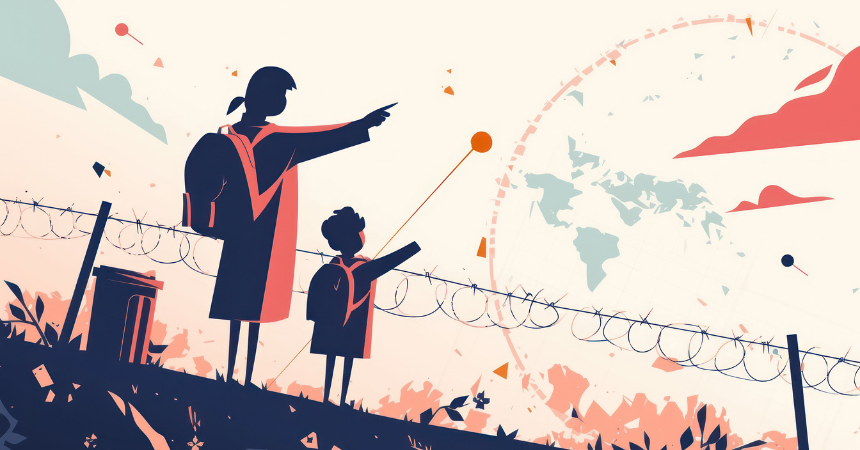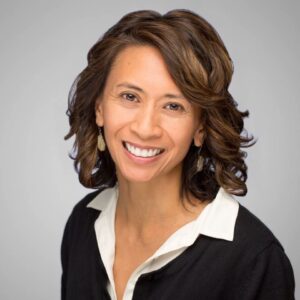A Pact for All Children’s Future


It’s been almost two months since the United Nations General Assembly adopted the Pact for the Future, a roadmap to “turbocharge” progress to achieve the sustainable development goals for people and planet by 2030.
The Pact sets out clear guideposts with specific actions, all laid upon the foundation of the three pillars of the UN Charter — international peace and security, human rights, and development.
Yet, it fails to reflect reality for the world’s children – particularly for the youngest and most vulnerable —and education. Although children, education, and early childhood are mentioned in the Pact for the Future, there are noticeably no dedicated actions for them, even in the Youth and Future Generations annex.
If the “summit” of the future is something that the global community wishes to climb, the Pact should very clearly acknowledge where the journey begins – children.
As I considered the omission of specific actions for children in a global roadmap, I remembered an episode of the What Now? podcast, in which host Trevor Noah interviews historian and author Yuval Noah Harari. The conversation starts with an exploration of information – what information is and how it is spread, that information isn’t the same thing as truth, and that it certainly doesn’t always reflect reality.
Harari used the analogy of a geographical map as a vehicle for information, saying, “A map is an abstraction…because you cannot put most things on a map.” It is impossible to create a map that is one-to-one scale with the world. From the perspective of individual and collective reality, a map leaves out very important things.
Like most purveyors of information, maps can be used by those with decision-making power who want to convey a particular point of view. For example, the world maps that many of us are accustomed to seeing, based on the Mercator projection, exaggerate the size of landmasses farther from the equator; thus, Africa appears relatively smaller than it is, and Europe and the United States appear to be bigger. Inappropriate use of this map, created for navigation, has resulted in distorted views of the world. Although more accurate portrayals are increasingly being used, additional work is necessary to represent the reality of people and the places where they live.
Similarly, the Pact for the Future is restricted in fully representing the realities of people and how global challenges are impacting them in their context. However, it has an important role to play in guiding our future progress toward sustainable development, and it is difficult to understand why the realities of children and child development were not prioritized when research has advanced our understanding of quality early care and education as foundational to sustainable development.
To make concrete progress toward a sustainable future, we need a multilateral, inclusive, and holistic commitment to children and a comprehensive roadmap that guides us there.
It’s time to co-create A Pact for All Children’s Future with guideposts and actions that center child rights and reflect the interdependence of the Sustainable Development Goals (SDGs) with the cornerstone of education SDG 4. It should reflect the real impact that climate change, conflict and crisis, environmental degradation, and socio-economic inequality have on children’s development, learning, and well-being from before birth, through early childhood, and beyond.
A roadmap for all children would elevate necessary, future-forward actions, such as early intervention; disability inclusive and gender-transformative education; and strengthening, growing, and diversifying the teacher workforce.
Such a commitment to the future of all children can only be achieved through an enabling international environment – the type that is detailed in the Pact for the Future, where nations are able to work in coordination with each other more effectively and efficiently and political will and trust in global governance are restored.
That enabling environment would necessarily prioritize investment in the early years and the development of innovative financing mechanisms that overcome the barriers to cooperation and collaboration detailed in ECDAN’s Open Letter on the United Nations Pact for the Future on the Importance of the Early Years.
When we combine the existing Pact for the Future with a roadmap that identifies guideposts and actions for all children, we can truly chart a path for our collective future.
Since the adoption of the Pact for the Future, education leaders met in Brazil for UNESCO’s Global Education Meeting and released the Fortaleza Declaration, which reaffirmed education as a human right and a cornerstone to sustainable development and committed to putting education on top of the political and financing agenda.
It was heartening to see education highlighted in a way that the Pact failed to do. And yet, the Fortaleza Declaration also fell short in committing to our most vulnerable children, making no mention of children with disabilities and early childhood intervention.
Given the insufficient representation of children’s reality by global leaders and decision-makers, it is important to remember our collective power. Individuals and groups across sectors and disciplines from government, non-government, private, and community-led organizations have the knowledge and skills to analyze and unpack existing global policies and declarations, center the rights and local realities of children, and co-create a path for a brighter future.
This can be done through the coordination of advocacy efforts, using our spheres of influence to reach decision makers, strengthening relationships across sectors and disciplines, and listening to and learning from those who have direct impact on children’s lives, including caregivers, parents, and teachers.
We at Childhood Education International and our global network of educators are passionate about making visible the reality of the youngest and most vulnerable. It is embedded in our history, our values, and the work that we do. We challenge ourselves to build upon our contributions and reaffirm our commitment to child development, learning, and well-being.
Now more than ever, we need to work together for all children. Childhood Education International believes in the power of co-creation and collective action for an inclusive, equitable, and brighter future for every child in every nation.
Sign Up to Receive More Information & Engage With Us
 Yvette G. Murphy, Senior Global Education Advisor
Yvette G. Murphy, Senior Global Education AdvisorYvette Murphy is a skilled global education professional who is values-centered and has over 15 years’ experience supporting the learning and growth of children and educators worldwide through classroom teaching, program development, professional learning, and global advocacy. She is passionate about ensuring equity, inclusion, and social justice for most impacted and historically under-resourced and disadvantaged children and communities.
Yvette’s dynamic work experience in the private sector and with non-profit organizations demonstrates strong systems-thinking skills, a passion for innovation, and an ability to build bridges. She has a master’s degree in international education with a focus on non-formal and alternative education from The George Washington University.
A special open-access issue of the Journal of Research in Childhood Education features research on a variety of aspects of early childhood education programs and their outcomes across diverse contexts in low- and lower-middle income countries.
The issue features collaborative efforts between researchers from the Global South and Global North.
Authors of the article “Donor Coordination and Evidence Uptake in Early Childhood Education Policy,” discuss the need for greater investment in early childhood education to support the existing research base and consensus that quality early childhood development and learning lead to positive outcomes later in life. Using the lens of a multi-dimensional model for social change, the article also highlights the importance of strengthening capacity and growing networks and connectivity, all of which align with the themes and roadmap of the Pact for the Future.
All articles in this issue are free and publicly available without a subscription, reflecting our hope that they reach a wide audience and have a significant impact on the future of ECE.
Childhood Education International is dedicated to co-creating innovative solutions to education challenges and securing bright futures for children’s learning and wellbeing.
Explore our related initiatives and resources:
Education Diplomacy draws on the skills and practices of diplomacy to solve complex educational challenges through collective action. Learn more about Education Diplomacy.
Our Open Educational Resource (OER) Library shares free professional development resources for educators and the educator leaders in Arabic, English, French, Kiswahili, Spanish, and Ukrainian. Explore the OER Library.
Our Webinar Library includes recordings of webinars focused on topics such as holistic learning, Education Diplomacy, inclusive education, early childhood education, and much more. Visit the Webinar Library.